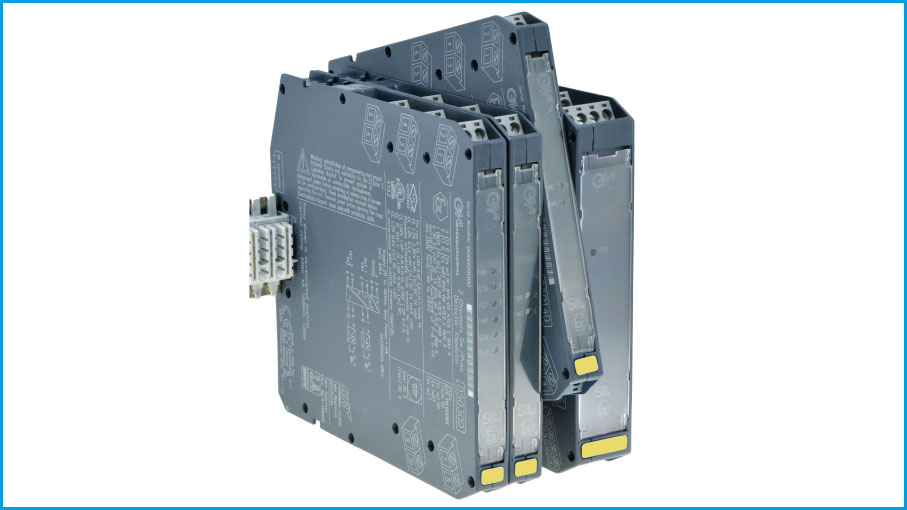A safety relay is a device that checks for potential faults and malfunctions in systems and machinery and is designed to reduce risks and prevent injury.
When a fault occurs, the safety relay issues a response in order to restore the risk to an acceptable safety level. Fundamentally, a traditional relay is an electromechanical component that uses an electromagnet with an electrical coil wrapped around a core of ferromagnetic material. Safety relays share this basic construction technology but with a number of key differences: they use force-guided contacts and almost exclusively electronic components with fault-proof semiconductor outputs. Safety relays must also be designed in such a way that, when wired properly, neither an internal equipment fault nor an external fault caused by the sensor or actuator will compromise safety.
When are safety relays used?
For example, when a load cannot be directly activated by a safety controller that is not able to handle the power needed to switch the load, or when more contacts are needed to be driven by the same control signal.
Another use case is that of malfunctions in control systems within the scope of European Machinery Directive (2006/42/EC). According to the directive, no one must be put at risk if, for example, a relay sticks or if a transistor or two electrical conductors short-circuit.
Safety relays protect both the machinery and the operator, thereby avoiding costly maintenance or equipment replacement. Typical functions include initiating the controlled interruption of a machine or device in order to stop its movements safely. They can also be used as an emergency shutdown mechanism by shutting off the power to specific systems or equipment, monitoring the position of movable guards, interrupting their closure during access, or executing an emergency shutdown.
In the event of a hazard, a safety relay works to reduce risk to within an acceptable level. When a fault is detected, the safety relay launches a safe, reliable response. Multiple safety relays may be interconnected in order to fully monitor a system or a machine. In short, safety relays are a simple, efficient way to meet existing safety standards.
Types
Safety relays may be single-function or multi-function. Single-function safety relays are the most affordable solution for smaller machinery that calls for a dedicated logic device to complete the safety function. Multi-function safety relays can be used in place of multiple single-function units. They are easier to install and require less complicated wiring. Multi-function safety relays also provide greater flexibility in terms of changes in design or control panel. There are also monitoring safety relays that are particularly indicated for situations in which multiple safety devices and minimal zone control are required.
Use
Safety relays are simple to activate. Their use does not require any specific training. Safety relays have become common due to their compact structure, high degree of reliability, and their ability to meet required standards. They have become an integral part of any new system or machine in which safety functions are necessary. Safety relays are commonly used in monitoring and control devices, such as in safety light curtains, safety mats, movable guards, three-position devices, two-hand control devices, magnetic switches, emergency stop buttons, and contactless safety sensors.
Benefits
Safety relays ensure switch reliability in the event of anomalies at two contact points. Other considerable benefits of safety relays are their integrated diagnostics functions and constant monitoring of the signal line. This makes it possible to detect any anomalies on the line, field-side or controller-side, without the need for additional wiring. Safety relays also ensure immunity to test pulses from the control panel in order to avoid triggering unexpected interruptions in the line. In addition to these benefits, G.M. International series D1000 and D5000 safety relays help to satisfy the necessary risk-reduction factor (RRF) when a load turns on or off in an IEC 61508/61511 safety instrumented function (SIF). SIL 3 certified relays ensure that the safety function is met within an appropriate, known probability of failure on demand (PFD). As a result, an equipment manufacturer can choose the safety configuration for a given safety relay that best meets the safety needs of their customers. Furthermore, G.M. International safety relays have removable terminal boards to facilitate replacement and testing.


